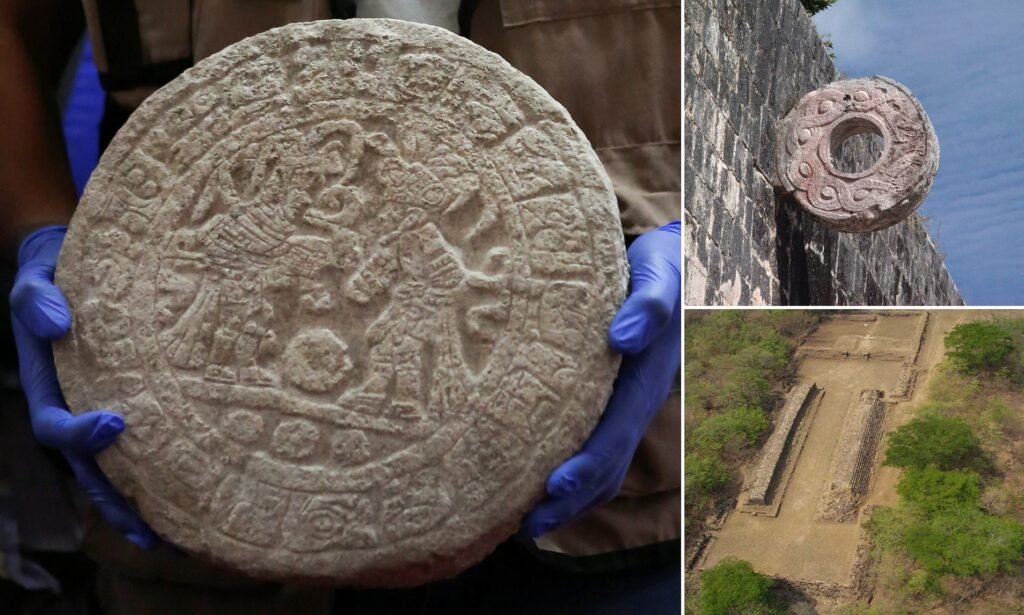The Mayan civilization emerged over 4,000 years ago in Mesoamerica and left behind a rich legacy of art, architecture, and culture. One intriguing aspect of Mayan society was their deep connection to the animal kingdom. Animals played a significant role in Mayan culture, being revered as symbols of power, spirituality, and even divine beings. They were not only admired for their physical attributes, but also attributed with various traits and characteristics that influenced Mayan beliefs and practices.
From the Black Howler Monkey to the mighty Jaguar, the Mayans held a profound fascination for the creatures that shared their environment. Animals were not only important in daily life as sources of food and materials, but they also held pivotal roles in religious rituals, mythology, and symbolism. In this comprehensive article, we will delve into the world of Mayan animals and uncover their extraordinary significance in Mayan society.
Ancient Animal Symbolism and Traits
To understand the role of animals in Mayan culture, it is essential to appreciate the symbolism attached to each creature. Mayan civilization attributed specific traits to various animals, which shaped their perception of the world. These traits encompassed physical attributes, behavioral characteristics, and even mystical associations.
The Black Howler Monkey, for example, was admired for its agility, strength, and the beauty of its long black tail. The Mayans recognized the monkey’s prowess in climbing trees and swinging effortlessly through the dense forests that surrounded their cities. Similarly, the jaguar was venerated for its strength, stealth, and connection with the spirit world. Its ability to move silently, its nocturnal nature, and its cunning behavior made it a symbol of power and heightened spiritual awareness.
On the other hand, the rattlesnake was associated with extraordinary powers and its venom was considered medicinal. The Mayans believed that the serpent’s venom possessed mystical properties and could be harnessed for healing purposes. Furthermore, the armadillo, with its protective shell, was seen as a representative of the earth and its fertility. Its association with the ground made it a symbol of stability, resilience, and the cycle of life.
Bats, in Mayan mythology, were linked to the underworld and represented death. Their nocturnal habits and their ability to navigate in darkness made them a prime symbol of the journey to the afterlife. Deer, on the other hand, were considered lords of the forest and often associated with forest-related deities. Their agile movements, gentle demeanor, and gracefulness made them an emblem of harmony with nature.
Rabbits, in Mayan culture, were seen as patrons of writing and the arts. Their rapid breeding and their association with the moon, which travels through the night sky quickly, made them symbols of creativity and inspiration. Water animals such as ducks were associated with the underworld and were believed to serve as messengers between different realms. Falcons and hawks, known for their keen eyesight and soaring ability, were considered divine messengers and symbols of power.
The Black Howler Monkey: Artists, Scribes, and Craftsmen
One of the most beloved creatures in Mayan culture was the Black Howler Monkey. This remarkable primate held a special place in Mayan society, with its presence extending beyond its physical existence. Let us dive into the importance of the Black Howler Monkey in Mayan culture.
The Importance of the Black Howler Monkey in Mayan Culture
The Black Howler Monkey was considered a direct manifestation of the gods in Mayan belief. Its nimbleness, intelligence, and unique vocalizations captured the imagination of the Mayans, who believed that these traits were bestowed upon the monkey by the divine beings themselves. Due to this divine connection, the monkey was revered as a symbol of wisdom, creativity, and inspiration.
Mayans were captivated by the beauty of the Black Howler Monkey’s long black tail. They saw it as an extension of the monkey’s grace and elegance, inspiring artists, scribes, and craftsmen to incorporate the monkey’s tail into their creations. The tail became a prominent motif in Mayan architecture, pottery, and textiles, symbolizing the monkeys’ divine qualities and serving as a reminder of the close relationship between humans and the animal kingdom.
Architectural decorations featured intricate carvings and reliefs of howler monkeys, showcasing the Mayans’ admiration for these creatures. The curves and lines of the monkey’s outstretched limbs adorned the temples and palaces, adding an ethereal touch to the already grand structures. Such depictions of the Black Howler Monkey highlighted the Mayans’ appreciation for the beauty and power of nature, blurring the boundaries between the human and animal realms.
The Black Howler Monkey in Mythology: The Hero Twins
When exploring Mayan mythology, the story of the Hero Twins takes center stage. The Black Howler Monkey plays a pivotal role in this mythological narrative, representing both a physical and metaphorical connection with the divine.
According to Mayan mythology, the Hero Twins, Hunahpu and Xbalanque, embark on a journey to the underworld to contend with the god of the underworld, known as Xibalba. It is during their encounter in the realm of Xibalba that the Hero Twins confront the Black Howler Monkey, who serves as one of the divine judges of the underworld.
In their quest, the Hero Twins engage in various challenges and tests of strength, wit, and skill. The Black Howler Monkey, with its cunning nature and divine knowledge, becomes a formidable opponent for the Hero Twins. This encounter represents the Mayans’ belief in the interconnectedness of the natural and spiritual worlds, where humans must face supreme beings while on their journey of enlightenment.
The imagery of howler monkeys in relation to the Hero Twins is present in much of Mayan artwork and mythology. Paintings, carvings, and murals depict scenes of the Monkey Judge issuing trials and tribulations to the Hero Twins. The symbolism of this encounter highlights the Mayans’ acknowledgment of the Black Howler Monkey as a powerful and divine figure, capable of shaping the destiny of humans.
